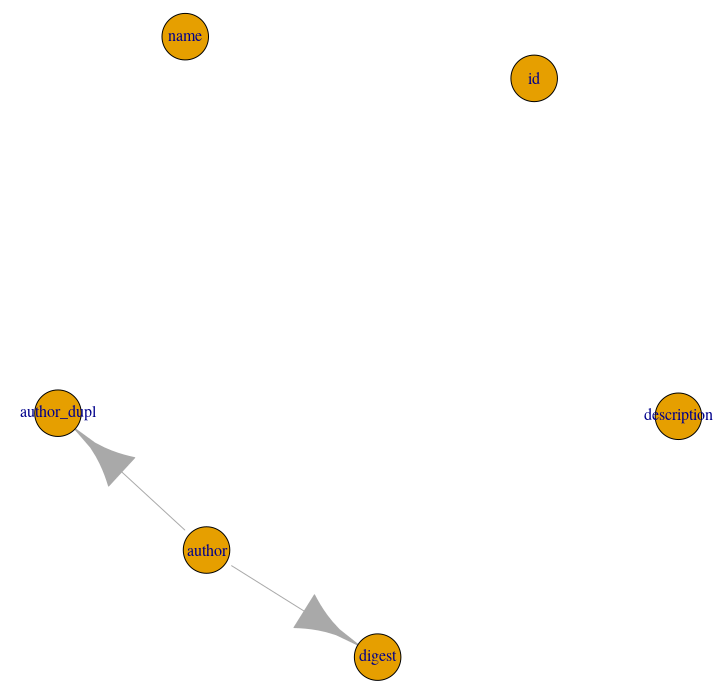DataFakeR workflow
Krystian Igras
2023-02-08
Source:vignettes/datafaker_workflow.Rmd
datafaker_workflow.RmdThe main goal of DataFakeR package is to simulate fake data based on table(s) configuration.
Creating table schema
The configuration file describing schema can be automatically created based on database configuration, R named list of tables and/or customized manually (see schema structure).
When the schema should be dumped from database simply run:
schema <- schema_source(
source = <db-connection-object>,
schema_name = <target-schema-name>,
file = <target-schema-configuration-file>
)If you want to create dump from list of tables run:
schema <- schema_source(
source = <named-list-of-tables>,
schema_name = <target-schema-name>,
file = <target-schema-configuration-file>
)The function will read necessary schema information and save it in
file yaml file. As a result the new R6 object will be
returned storing all the necessary information about the datasets, that
allow the package to perform simulation step.
Note: You may customize data sourcing options using
schema_source’s faker_opts parameter. See dump configuration.
If you already have defined yaml configuration file, you may also use
schema_source to read the schema object. Just use the
function providing schema file path as a source
parameter:
schema <- schema_source(
source = <source-schema-configuration-file>
)Note: You can see both schema sourcing and
simulation progress by setting
options("dfkr_verbose" = TRUE).
Simulating data
In order to simulate the data, pass schema object to
schema_simulate function:
schema <- schema_simulate(schema)The simulation process is highly configurable. For more details see simulation options.
Accessing simulated data
The simulated tables can be accessed with using
schema_get_table function:
table_a <- schema_get_table(schema, <table-name>)The other schema methods
Display table dependencies
In order to perform tables simulation and preserve its original
structure DataFakeR detects dependencies between tables and columns.
Such dependencies sets the order of tables and columns simulation. For
example having table_a$column_a as a foreign key for
table_b$column_b, table_b will be simulated
before table_a.
Table dependencies are defined by foreign keys definition, whereas inner-table column dependencies consider multiple parameters defined in yaml configuration. Such cases are:
- the column is grouped by another one,
- the column is bounded by equality constraint with another one,
- the column is defined by formula in which the other column was used.
To check tables dependencies use:
schema_plot_deps(schema)To check column dependencies for selected table use:
schema_plot_deps(schema, table_name = <table-name>)Example output:

Updating schema object
While trying to simulate the target data you may want to improve the currently defined configuration file. If you want to update the object using new version of the file (and new simulation options) without the need to source it from scratch just use:
schema <- schema_update_source(
schema,
file = <new-version-source-file>,
faker_opts = <new-simulation-options>
)